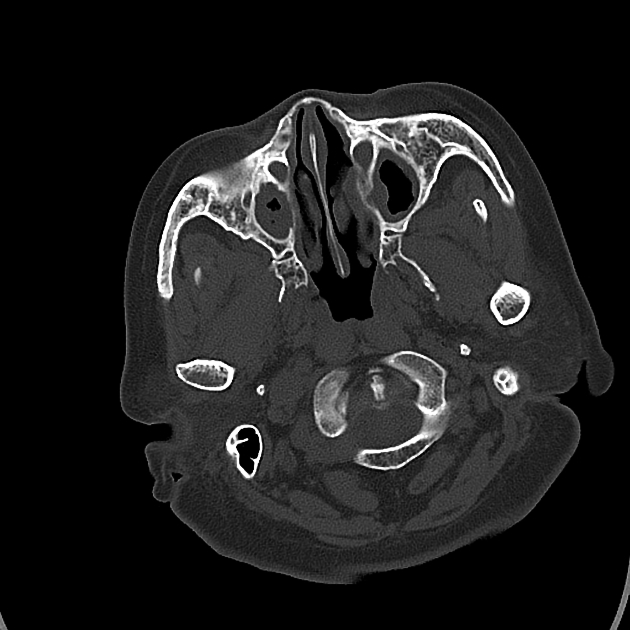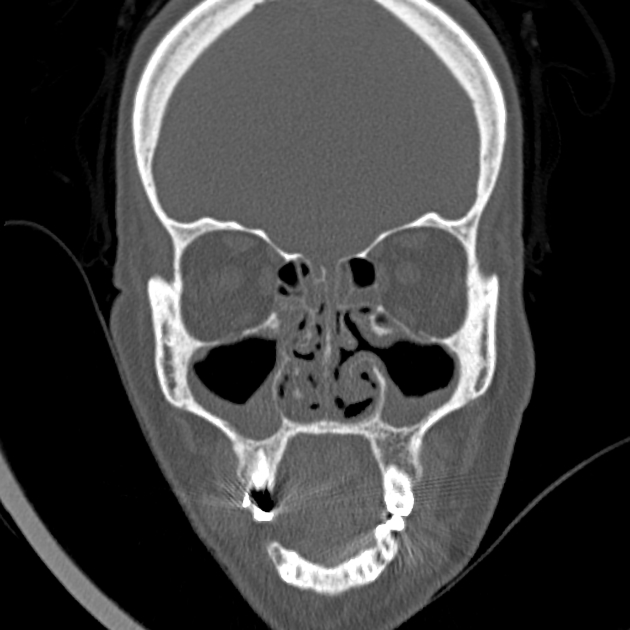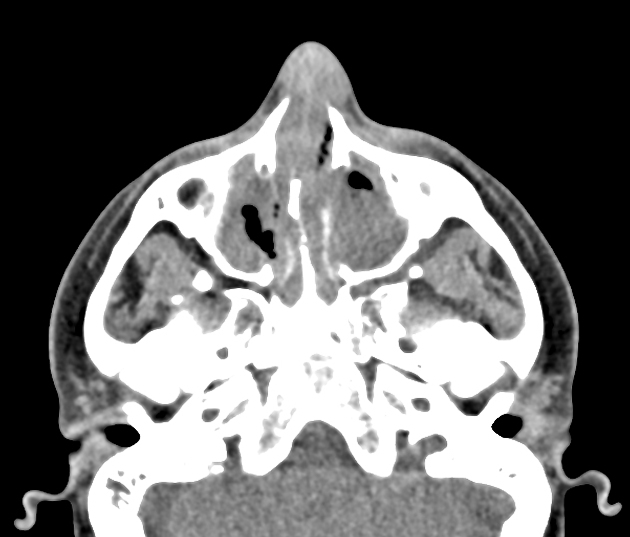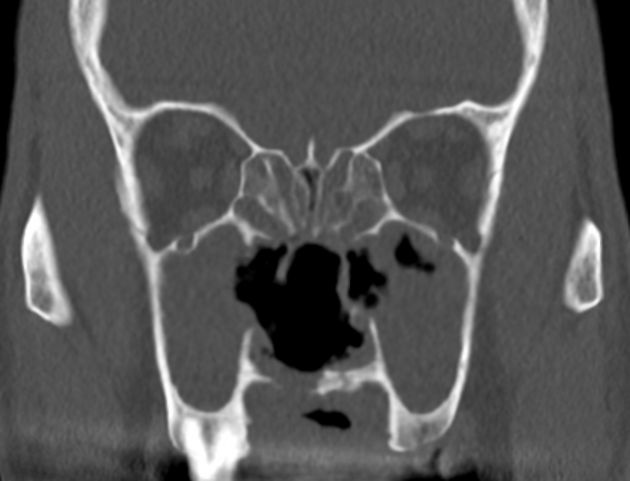The upper respiratory tract manifestations of granulomatosis with polyangiitis (GPA) are common and affect most patients.
For a general discussion of the condition, please refer to the main article on granulomatosis with polyangiitis (GPA). For other organ-specific radiographic features, please refer to individual articles:
Granulomatosis with polyangiitis (previously known as Wegener granulomatosis), is a multi-system systemic necrotizing non-caseating granulomatous vasculitis affecting small to medium-sized arteries, capillaries and veins.
On this page:
Epidemiology
A rare disease predominantly affecting individuals in the 5th to 7th decades of life, with a slight predilection towards males.
Clinical presentation
The majority of patients of GPA have upper respiratory tract involvement, most commonly presenting with nasal obstruction, rhinitis and epistaxis 1,3 - akin to chronic rhinosinusitis. Often presents following a protracted period of symptoms (months to years), due to being mistaken for chronic sinusitis clinically.
Pathology
GPA manifests in the upper respiratory tract with 1-3:
sinusitis/mastoiditis/otitis
sclerosing osteitis of the nasal cavity 4
sinonasal mucosal ulcers
lacrimal gland involvement
bone deformities, e.g. nasal septal perforation, nasal saddle deformity
Radiographic features
CT
-
non-contrast CT
sinonasal mucosal thickening +/- air-fluid levels +/- soft tissue nodules
bony/cartilaginous erosions, in particular, affecting lamina papyracea, nasal septum, and lateral nasal cavity wall +/- perforation
scalloping, sclerosis, neo-osteogenesis, and calcification may also be present.
-
post-contrast CT
enhancing soft tissue nodules
MRI
T1: low-to-intermediate signal intensity nodules or mass-like mucosal lesions
T1 C+ (Gd): enhancement of involved mucosal tissue
T2: low signal intensity of nodules, relative to inflamed (edematous) surrounding mucosa
Treatment and prognosis
Usually consists of a combination of corticosteroids and cytotoxic agents such as cyclophosphamide. Generally indolent, but if the fulminant disease occurs with secondary sepsis, antibiotics are required.
Differential diagnosis
Possible considerations include:









 Unable to process the form. Check for errors and try again.
Unable to process the form. Check for errors and try again.